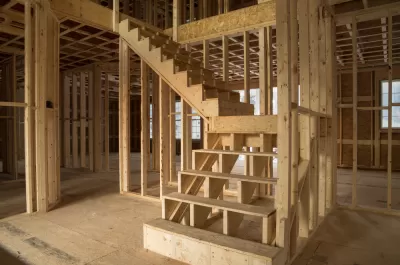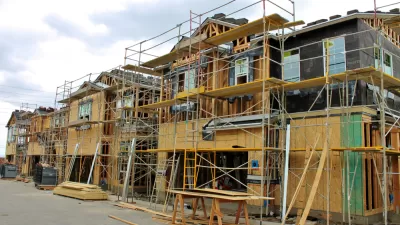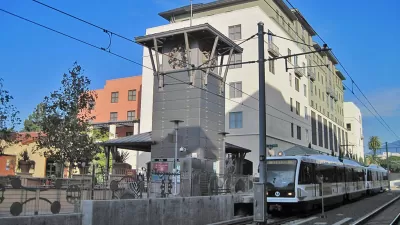It's too early to gauge the long-term effects of California's housing package signed a year ago. But with a $4 billion bond on the ballot this November, some facts (and some dramas) have already made themselves known.

Last September, California Governor Jerry Brown signed into law a raft of bills meant to address the state's housing woes. They included SB 2, SB 3, and the controversial SB 35. Here, Matt Levin checks in on some results of that legislation, acknowledging that the bulk of related construction has yet to occur.
In terms of raw numbers, Levin writes, "After a recent uptick, the state is on pace to greenlight more than 130,000 new housing units this year. That's still 50,000 short of where experts say we need to be to keep prices from getting worse, and way less than what either candidate for governor says we need."
In addition, more localities are reporting their housing data to the state: upwards of 70 percent, according to Ben Metcalf of California's Housing and Community Development Department. "The housing package put some teeth, at last, into those requirements. Cities and counties that fail to provide accurate and timely housing data now face myriad penalties, including the loss of control over local housing approvals."
One of the bills, SB 2, placed a big-dollar bond measure on this year's ballot. "Lawmakers placed a $4 billion bond on the ballot this fall, $3 billion of which will go toward the financing of below-market-rate housing and other forms of housing assistance for low-income Californians (the other $1 billion will go towards home loans for veterans). Californians will have a chance to vote on Prop. 1 in November."
Finally, Levin discusses SB 35 and its usage in Cupertino to push through a large development despite opposition and reticence from local elected officials.
FULL STORY: The state passed a major housing package last year. Is it working so far?

Maui's Vacation Rental Debate Turns Ugly
Verbal attacks, misinformation campaigns and fistfights plague a high-stakes debate to convert thousands of vacation rentals into long-term housing.

Planetizen Federal Action Tracker
A weekly monitor of how Trump’s orders and actions are impacting planners and planning in America.

In Urban Planning, AI Prompting Could be the New Design Thinking
Creativity has long been key to great urban design. What if we see AI as our new creative partner?

Pedestrian Deaths Drop, Remain Twice as High as in 2009
Fatalities declined by 4 percent in 2024, but the U.S. is still nowhere close to ‘Vision Zero.’

King County Supportive Housing Program Offers Hope for Unhoused Residents
The county is taking a ‘Housing First’ approach that prioritizes getting people into housing, then offering wraparound supportive services.

Researchers Use AI to Get Clearer Picture of US Housing
Analysts are using artificial intelligence to supercharge their research by allowing them to comb through data faster. Though these AI tools can be error prone, they save time and housing researchers are optimistic about the future.
Urban Design for Planners 1: Software Tools
This six-course series explores essential urban design concepts using open source software and equips planners with the tools they need to participate fully in the urban design process.
Planning for Universal Design
Learn the tools for implementing Universal Design in planning regulations.
planning NEXT
Appalachian Highlands Housing Partners
Mpact (founded as Rail~Volution)
City of Camden Redevelopment Agency
City of Astoria
City of Portland
City of Laramie





























